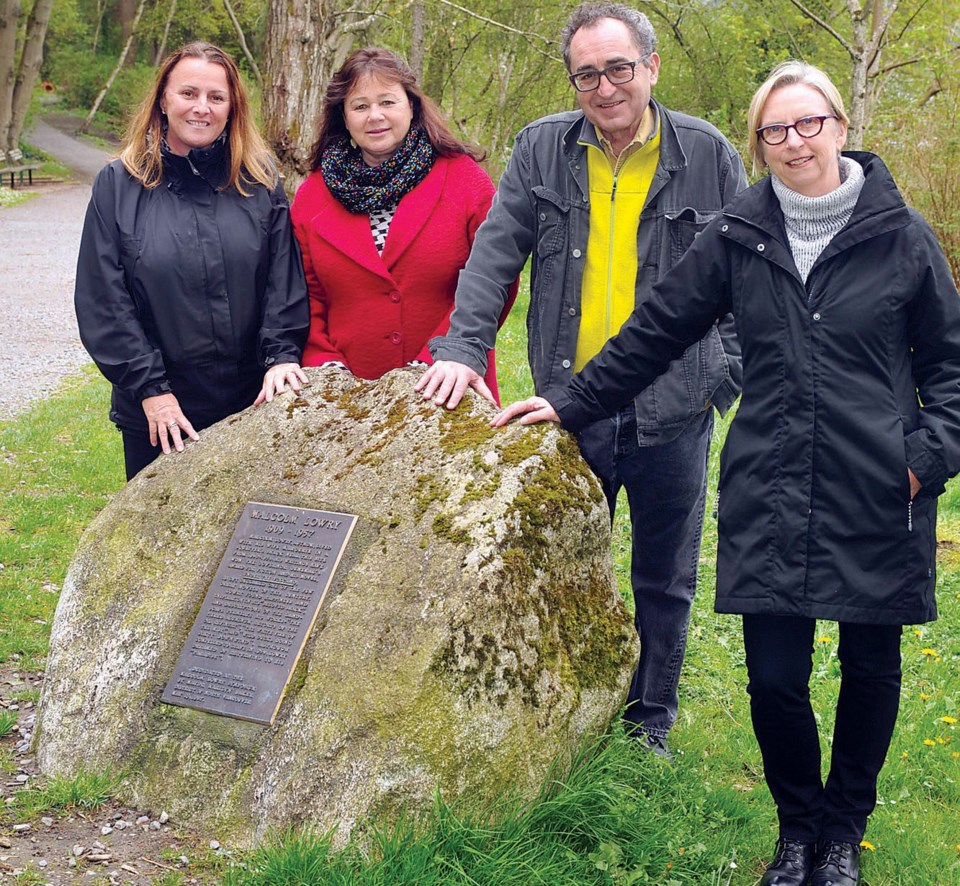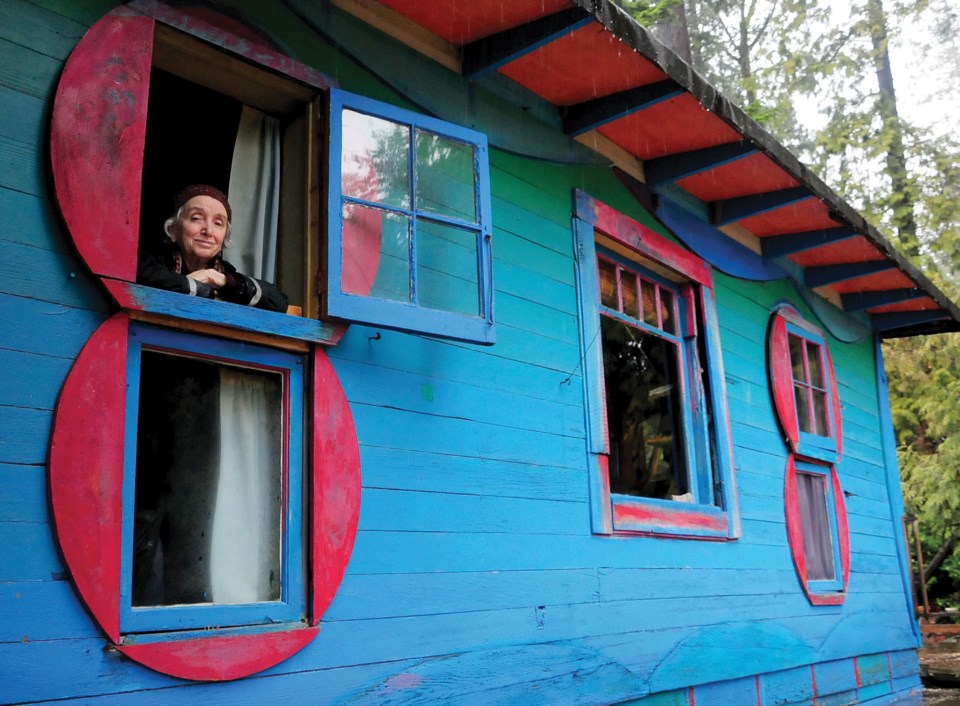As B.C. Day approaches, a group of artists and history enthusiasts are rallying to save a colourful, last remaining vestige from Dollarton’s storied squatter era.
The Blue Cabin, beloved home to artist couple Al Neil and Carole Itter for 50 years, languishes in storage at a chemical plant in the nearby industrial area.
Rotted remnants of an old timber dock remain attached to the diminutive blue cabin after it was uprooted from the banks of the Burrard Inlet near Cates Park last summer.
Until last year, Neil, 90, and Itter, 75, surviving stalwarts of the squatter era, continued to live in their blue cabin furnished with a Farrand upright piano for Neil, a freestyle jazz musician.
But they were forced to leave to make way for a new Polygon condo development on the old McKenzie Barge site.
Polygon put up the money to have the frail 80-year-old cabin trucked away. The rectangular cabin with distinctive red shutters now sits six feet in the air, on skids, inside the Canexus chemical plant – a stone’s throw from Maplewood mudflats and a stretch of the Dollarton waterfront richly steeped in North Vancouver history.
A squatter community settled on the Dollarton shoreline in the 1930s, counting English poet Malcolm Lowry among its inhabitants. By the 1970s the area became a haven and counterculture hotbed for artists and hippies who lived in shacks that lined the inlet’s banks.
“It’s important to be able to have something tangible that you can look back on and remember what life used to be like,” said District of North Vancouver Coun. Lisa Muri, who is championing efforts to save the blue cabin, along with a group of artists and heritage experts.
Plans to restore the relic as an artists’ residency are now underway, bolstered by a $10,000 grant DNV council awarded the Blue Cabin Committee on April 11.
At that meeting, Coun. Doug MacKay-Dunn said the blue cabin has the potential to be a monument to Dollarton’s history.
“We’re living through a period of rapid change and even more rapid development,” said MacKay-Dunn. “You know, we risk forgetting our past.”
The Blue Cabin Committee envisions putting the historic cabin on a barge, with a small house alongside it to serve as a floating, unique artists’ residence outfitted with digital screens to show the history of squatting, the foreshore and First Nations in the Dollarton area.

While their intention is to have the cabin mobile so it can be on display in different waterfront communities, the group is “committed to have it connected to the North Shore,” Blue Cabin Committee member Glenn Alteen, a director of the Vancouver-based Grunt Gallery, told council. Alteen has a personal connection to the project, having worked as a curator for the artists that own the cabin.
Coun. Robin Hicks, calling the project “a tremendous waste of money, could not be convinced of its heritage value when it came to voting on the funding application.
“How much do we as a society spend on a dilapidated hut?” said Hicks. “I think $10,000 is not an insignificant amount and it could be used to help the homeless or more charitable endeavours within the district.”
Coun. Roger Bassam suggested the heritage value of the cabin is in its esthetic, which he said could probably be recreated.
Mayor Richard Walton briefly reminisced about taking students from Carson Graham secondary down to the Dollarton area in the 1970s to sit at the side of Lowry’s cabin and study his work.
“This cabin does have greater value I think than just in North Vancouver district,” said Walton, adding he is hoping the cabin comes back home to reside in the district. Previously the DNV mulled restoring the cabin and keeping it in Cates Park, but Muri said that raised liability concerns.
The Blue Cabin committee has already received in-kind labour and professional expertise for the estimated $350,000 remediation project, and recently applied for funding grants from the City of Vancouver, Metro Vancouver, Heritage B.C, and the B.C. Arts Council. At the end of June, the group was finishing the cabin’s structural assessment and outline for the restoration work, which has been put to three contractors for estimates.
They are now waiting on an early feasibility study, to be completed in the next two weeks, that looks at locations and exactly how the cabin will be put back on the water. Time is of the essence as Canexus, which is currently storing the shack free of charge, is being sold to a neighbouring business – making the cabin’s future uncertain, said Alteen.



